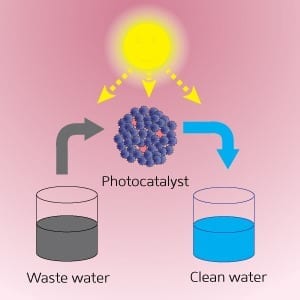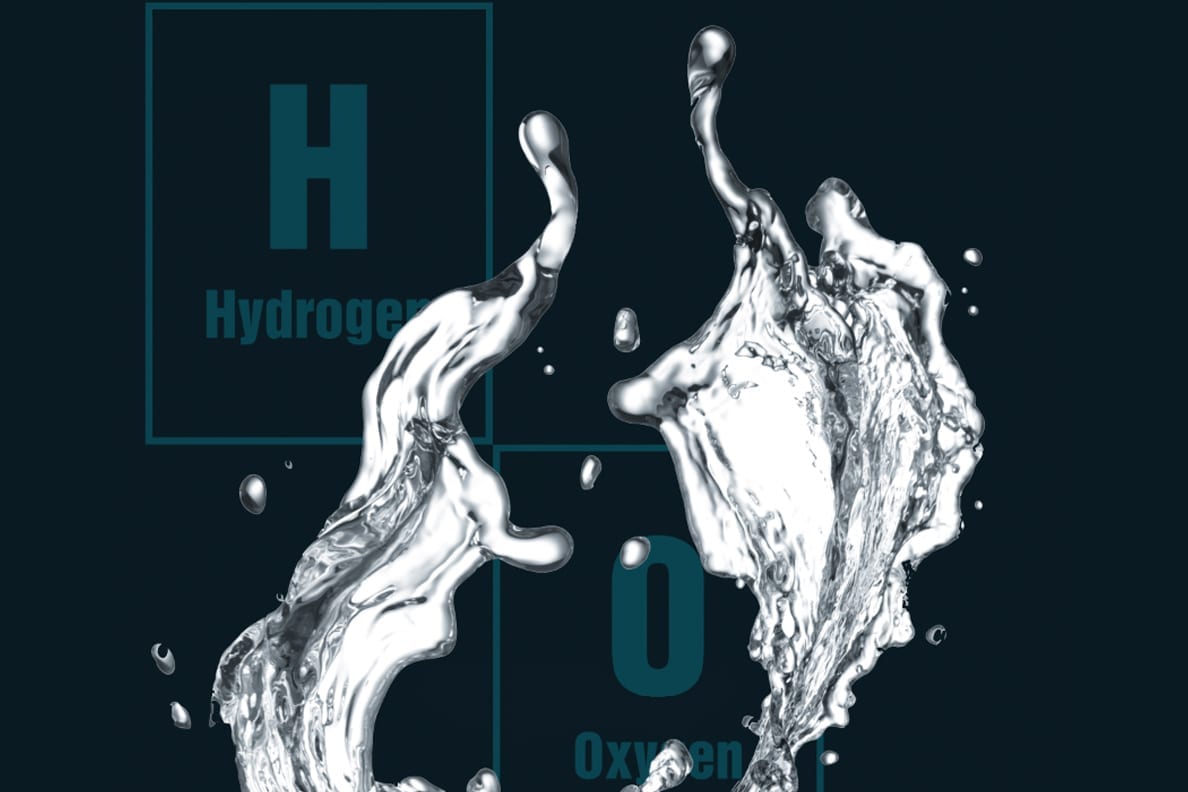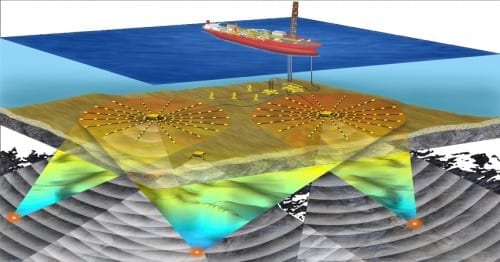
via A*STAR Institute of Materials Research and Engineering
Mixed nanoparticle systems may help purify water and generate hydrogen
A new catalyst could have dramatic environmental benefits if it can live up to its potential, suggests research from Singapore. A*STAR researchers have produced a catalyst with gold-nanoparticle antennas that can improve water quality in daylight and also generate hydrogen as a green energy source1.
This water purification technology was developed by He-Kuan Luo, Andy Hor and colleagues from the A*STAR Institute of Materials Research and Engineering (IMRE). “Any innovative and benign technology that can remove or destroy organic pollutants from water under ambient conditions is highly welcome,” explains Hor, who is executive director of the IMRE and also affiliated with the National University of Singapore.
Photocatalytic materials harness sunlight to create electrical charges, which provide the energy needed to drive chemical reactions in molecules attached to the catalyst’s surface. In addition to decomposing harmful molecules in water, photocatalysts are used to split water into its components of oxygen and hydrogen; hydrogen can then be employed as a green energy source.
Hor and his team set out to improve an existing catalyst. Oxygen-based compounds such as strontium titanate (SrTiO3) look promising, as they are robust and stable materials and are suitable for use in water. One of the team’s innovations was to enhance its catalytic activity by adding small quantities of the metal lanthanum, which provides additional usable electrical charges.
Catalysts also need to capture a sufficient amount of sunlight to catalyze chemical reactions. So to enable the photocatalyst to harvest more light, the scientists attached gold nanoparticles to the lanthanum-doped SrTiO3 microspheres (see image). These gold nanoparticles are enriched with electrons and hence act as antennas, concentrating light to accelerate the catalytic reaction.
Read more: A gold catalyst for clear water
The Latest on: Gold-nanoparticle antennas
[google_news title=”” keyword=”Gold-nanoparticle antennas” num_posts=”10″ blurb_length=”0″ show_thumb=”left”]
via Google News
The Latest on: Gold-nanoparticle antennas
- DNA origami guides precise nanoparticle patterning for tunable metasurfaceson May 15, 2024 at 5:00 pm
(Nanowerk Spotlight) Manipulating the flow of light with nanoscale precision has been a grand challenge in optics, as it requires the ability to precisely position building blocks like metallic ...
- Nanotubes, nanoparticles, and antibodies detect tiny amounts of fentanylon May 9, 2024 at 10:32 am
A research team has developed a fentanyl sensor that is six orders of magnitude more sensitive than any electrochemical sensor for the drug reported in the past five years. The portable sensor can ...
- Revolutionizing Skincare: Pure Pro Aesthetics Unveils Groundbreaking Exosome LLT Pro Solution from Isov Sorexon April 24, 2024 at 3:36 pm
What's so fascinating and sets these exosomes apart is unlike the conventional method of delivery through microneedles and other devices, these exosomes utilize the property of gold nanoparticle ...
- Breakthrough rice bran nanoparticles show promise as affordable and targeted anticancer agenton April 21, 2024 at 5:00 pm
June 28, 2019 — By testing a variety of gold nanoparticles, researchers are providing first evidence of their impact upon human B lymphocytes -- the immune cells responsible for antibody production.
- Comprehending the future of clean fuels & productson April 3, 2024 at 3:37 pm
s “Hydrogen peroxide production by inorganic photocatalysts consisting of gold nanoparticle and metal oxide toward oxygen cycle chemistry” published in The Journal of Physical Chemistry (2023).
- Gold Nanoparticles: A Breakthrough in Parkinson’s Disease Treatment — New Insightson February 19, 2024 at 9:12 pm
known as gold nanoparticles, might hold the key to alleviating symptoms associated with Parkinson’s disease and multiple sclerosis (MS). An innovative oral drug, sprinkled with these ...
- Principles of Nano-Opticson November 12, 2023 at 9:58 pm
Ignatovich, Filipp V. Topham, David and Novotny, Lukas 2006. Optical Detection of Single Nanoparticles and Viruses. IEEE Journal of Selected Topics in Quantum ...
- Optical antennas for sensingon December 14, 2021 at 4:30 am
The probe is influenced by the interaction between the nanoparticles and their surroundings ... In their initial studies, the team fabricated an array of gold nanorods onto the end of a multimode ...
- What is smart dust and how is it used?on August 23, 2021 at 9:46 am
It consists of a 3D-printed functional cube package which contains several inkjet-printed sensors and the antenna. The circuit board has ... The smart dust (a silica shell-isolated gold nanoparticle) ...
- Gold Cables Really Do Work The Beston April 1, 2020 at 12:12 am
Sadly Hackaday is not an audio magazine, and if Mike bought me an Audio Precision he’d have to satisfy all the other writers’ test equipment desires too, and who knows where that would end!
via Bing News











